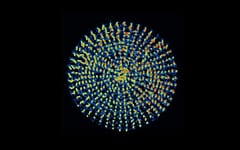
Researchers at the Harvard John A. Paulson School of Engineering and Applied Sciences (SEAS) have successfully developed a self-propelled, programmable artificial cilia. The new advancement comes after years of scientists attempting to engineer tiny, artificial cilia for miniature robotic systems. The artificial cilia could help such robotic systems perform highly complex motions like bending, twisting, and reversing.
The research was published in Nature.
Construction of Microstructures
Traditionally, the construction of microstructures requires multi-step fabrication processes and various stimuli in order to create complex movements, which has limited their wide-scale applications.
The newly developed micron-scale structures could be used for many applications, including soft robotics, biocompatible medical devices, and dynamic information encryption.
Joanna Aizenberg is the Army Smith Berylson Professor of Materials Science and Professor of Chemistry and Chemical Biology at SEAS. She is also senior author of the paper.
“Innovations in adaptive self-regulated materials that are capable of a diverse set of programmed motions represent a very active field, which is being tackled by interdisciplinary teams of scientists and engineers,” said Aizenberg. “Advances achieved in this field may significantly impact the ways we design materials and devices for a variety of applications, including robotics, medicine and information technologies.”

Enabling the Structure to Reconfigure and Propel
While previous research involved complex multicomponent materials to achieve the structural elements of these systems, the new team designed a microstructure pillar made of a single material. This single material is a photoresponsive liquid crystal elastomer, which enables the building blocks to realign and the structure to change shape when light hits the microstructure.
When the shape change occurs, the first thing that happens is the spot where the light hits becomes transparent, which allows light to penetrate deeper into the material and cause even more deformations. After that, the material deforms and the shape changes, meaning a new spot on the pillar is exposed to light and changes shape as well.
This process enables the microstructure to propel in a cycle of motion.
Shucong Li is a graduate student in the Department of Chemistry and Chemical Biology at Harvard, as well as co-first author of the paper.
“This internal and external feedback loop gives us self-regulating material. Once you turn the light on, it does all its own work,” said Li.
The material then reverts back to its original shape when the light turns off. Because the material can twist and change motion with its shape, the simplest structures can be reconfigured and tuned with endless possibilities.
Michael M. Lurch is a postdoctoral fellow in the Aizenberg Lab and co-first author of the paper.
“We showed that we can program the choreography of this dynamic dance by tailoring a range of parameters, including illumination angle, light intensity, molecular alignment, microstructure geometry, temperature, and irradiation intervals and duration,” said Lerch.
The team also demonstrated how the pillars interact with each other as part of an array.
“When these pillars are grouped together, they interact in very complex ways because each deforming pillar casts a shadow on its neighbor, which changes throughout the deformation process,” said Li. “Programming how these shadow-mediated self-exposures change and interact dynamically with each other could be useful for such applications as dynamic information encryption.”
“The vast design space for individual and collective motions is potentially transformative for soft robotics, micro-walkers, sensors, and robust information encryption systems,” Aizenberg added.
The research also included co-authors James T. Waters, Bolei Deng, Reese S. Martens, Yuxing Yao, Do Yoon Kim, Katia Bertoldi, Alison Grinthal, and Anna C. Balazs.
The post Researchers Create Self-Propelled Artificial Cilia appeared first on Unite.AI.
Credit: Source link


Comments are closed.